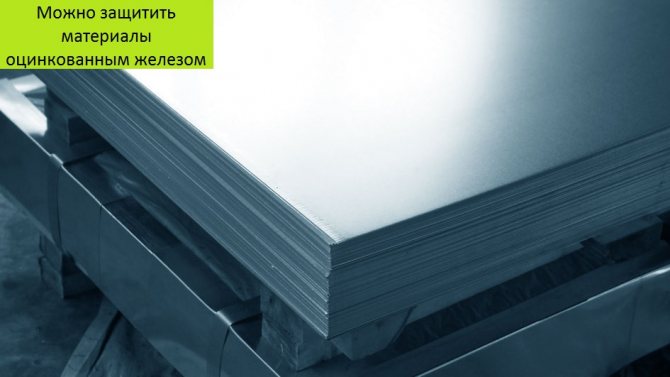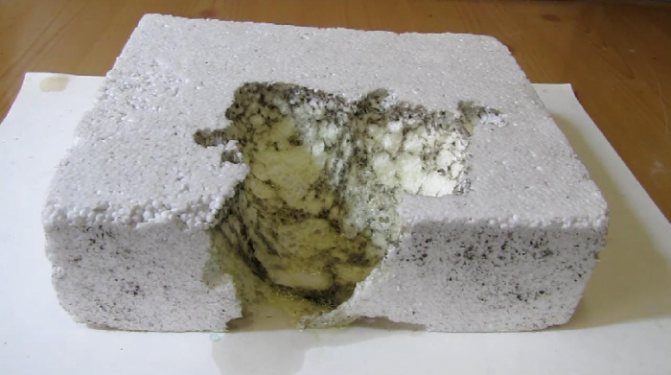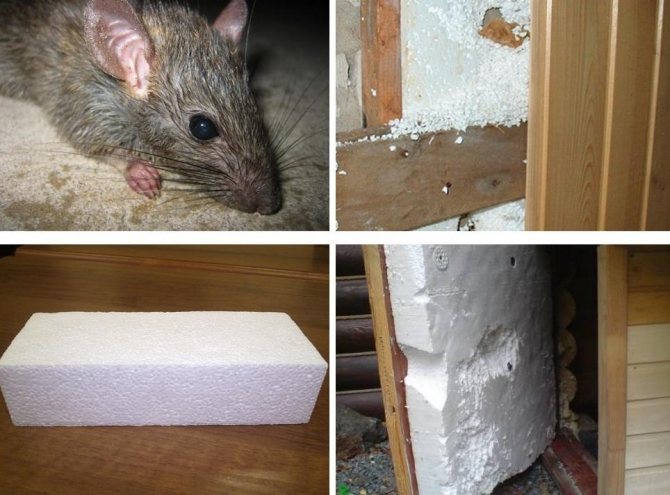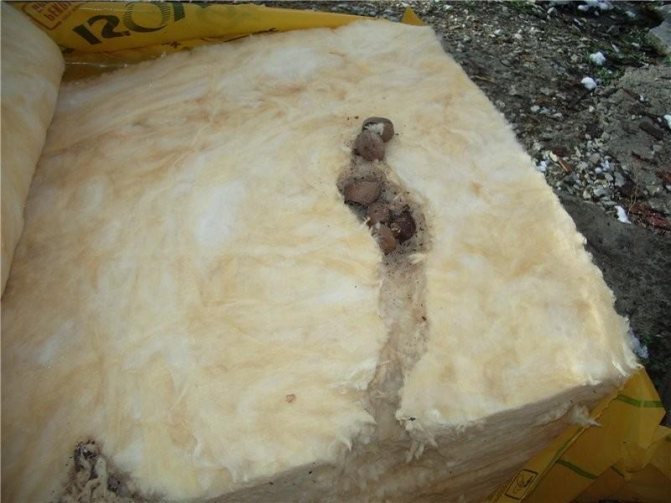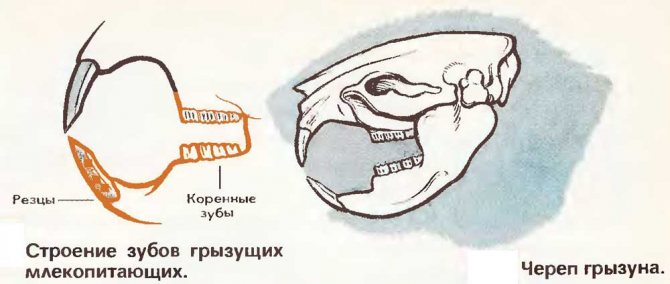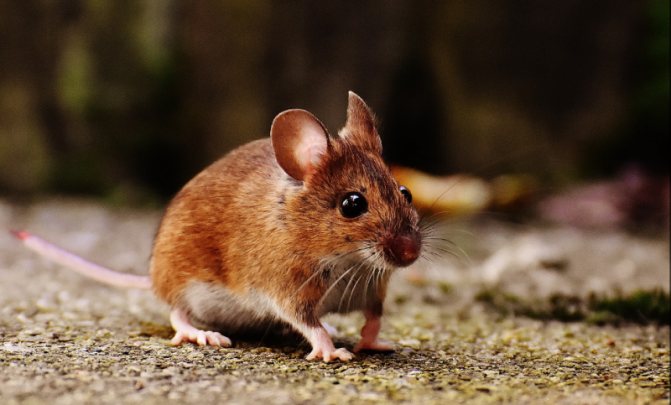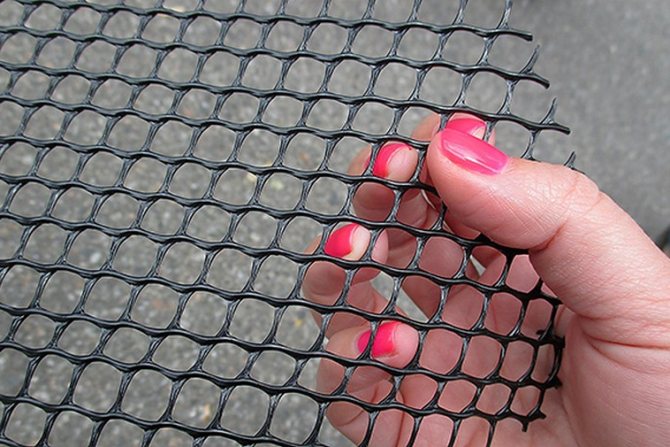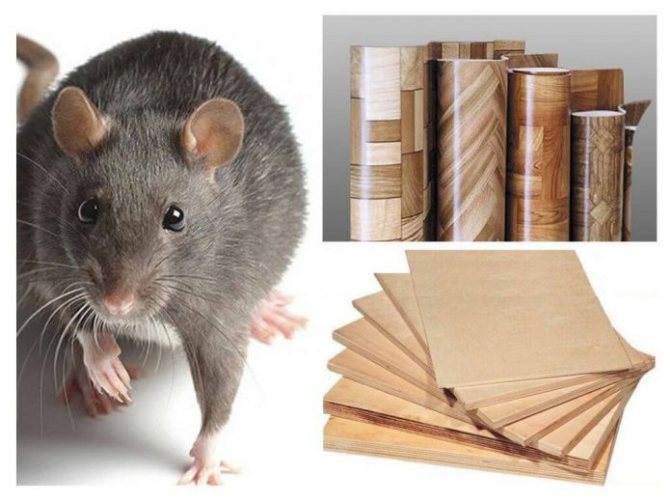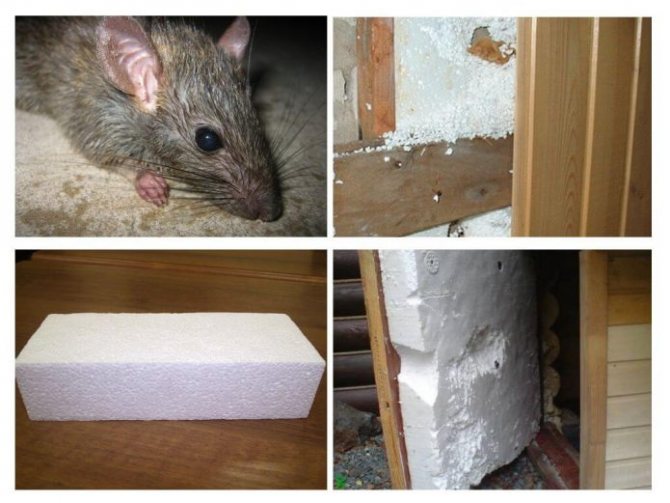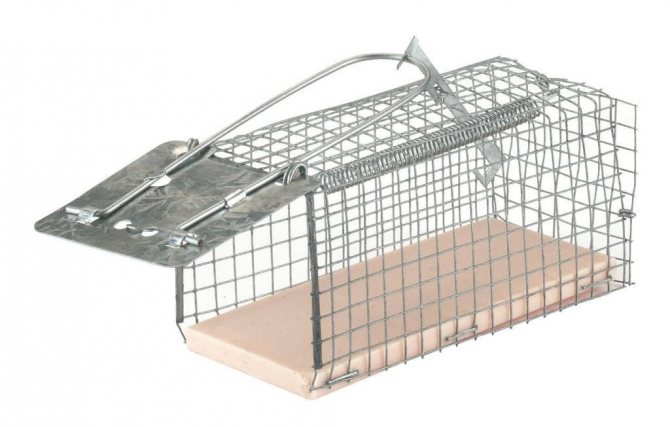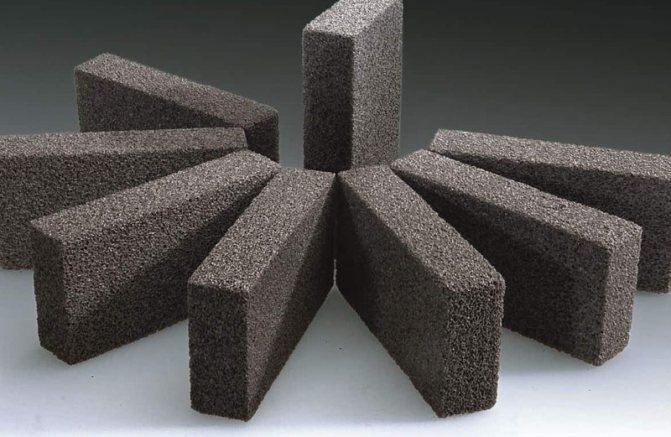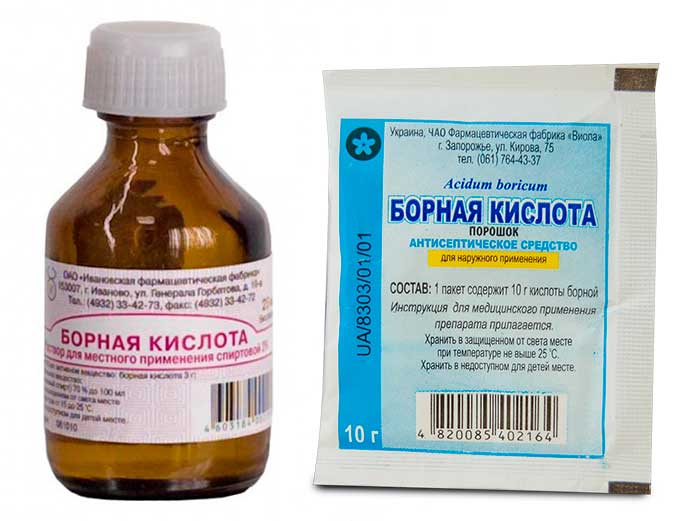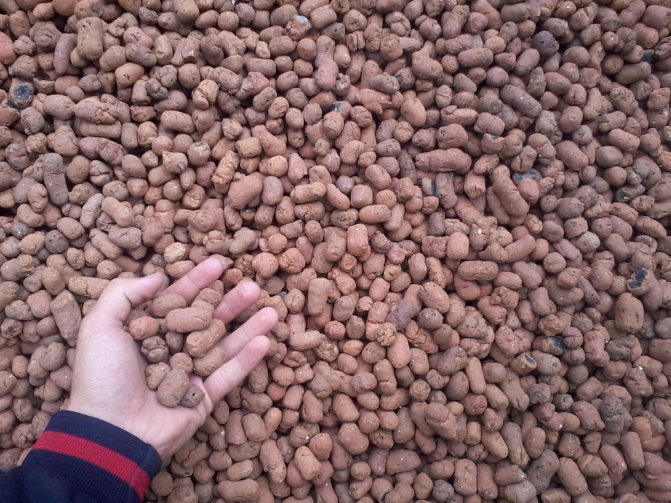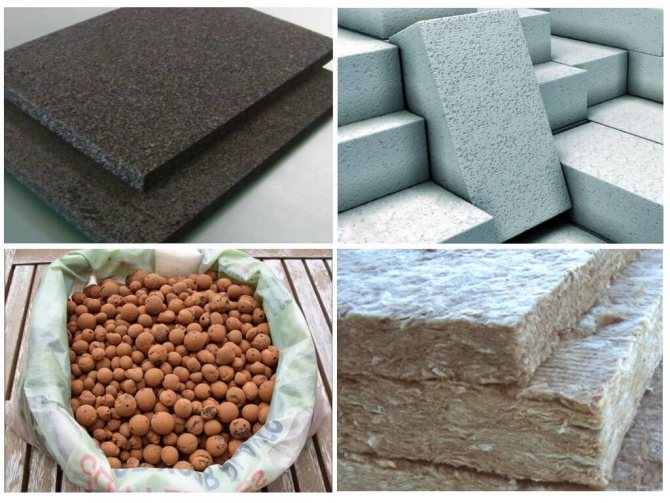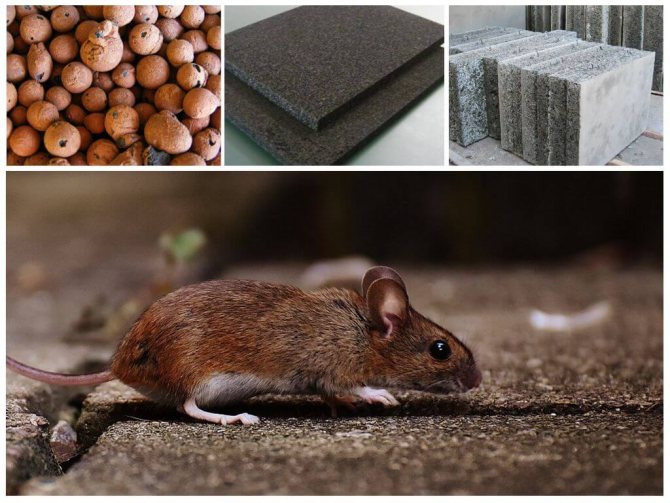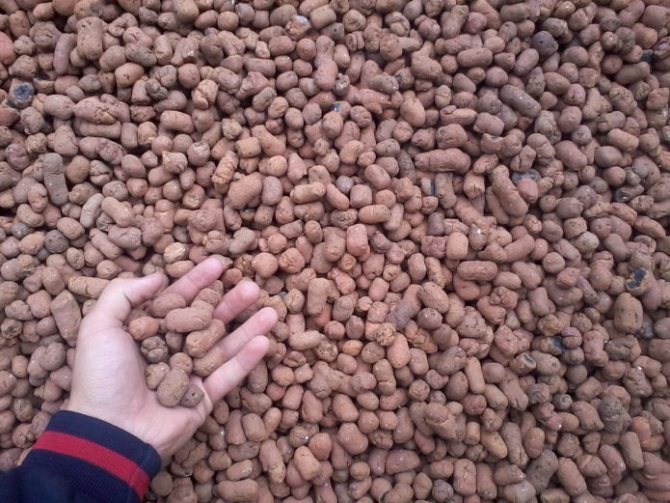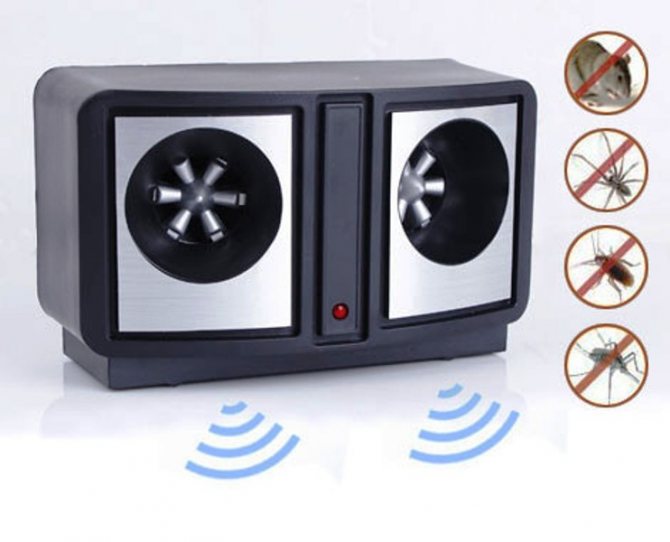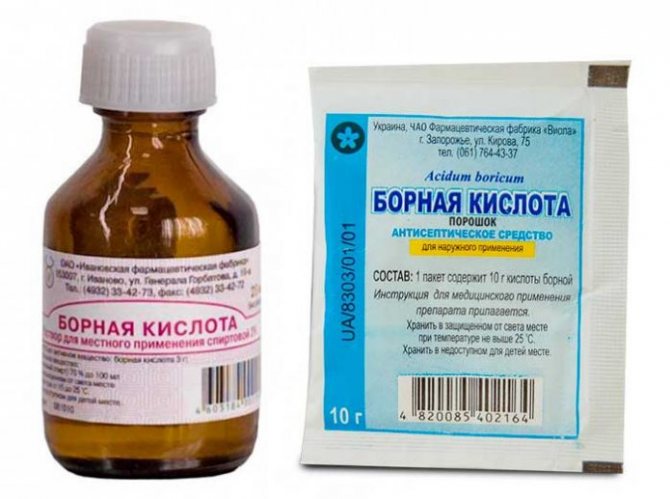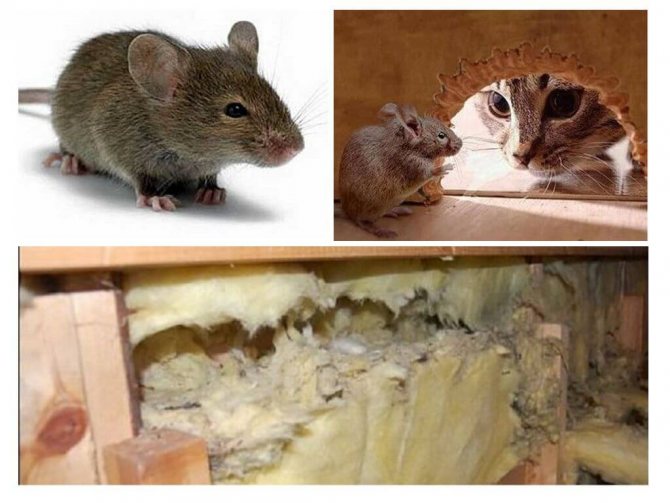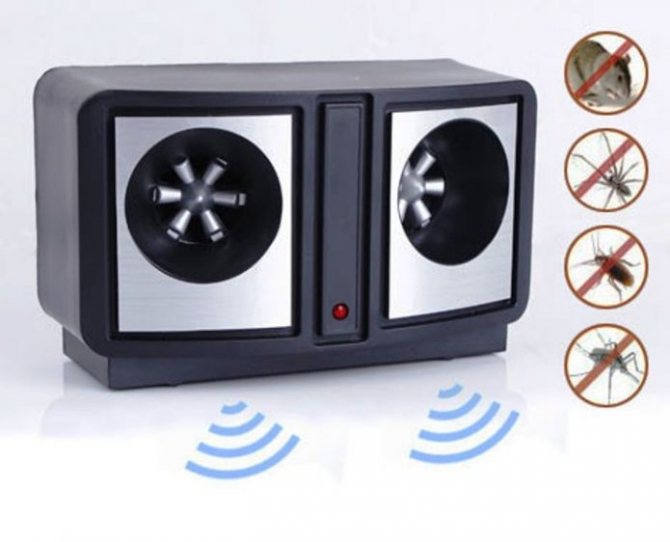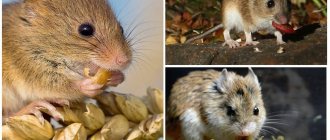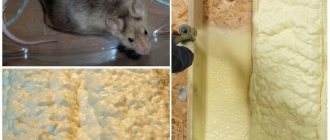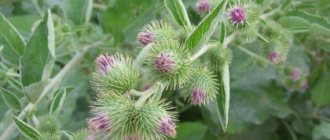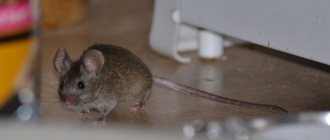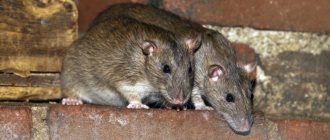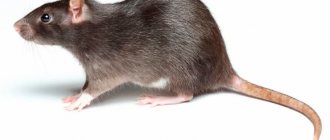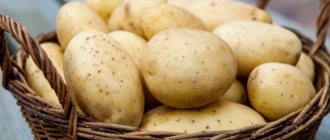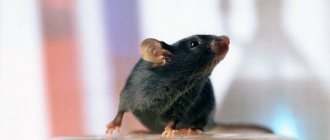Penoplex is a modern material with unique thermal insulation properties, which is the best fit for warming the foundation, walls and ceiling and is in great demand among buyers. Therefore, when choosing a heater for a summer residence or a country house, many people have a natural question: do mice eat penoplex? The author of the VredStop website found the answer: rodents do not eat insulation, but, trying to get into the room, they make moves in it and destroy the structure of the material. This reduces its thermal insulation properties.
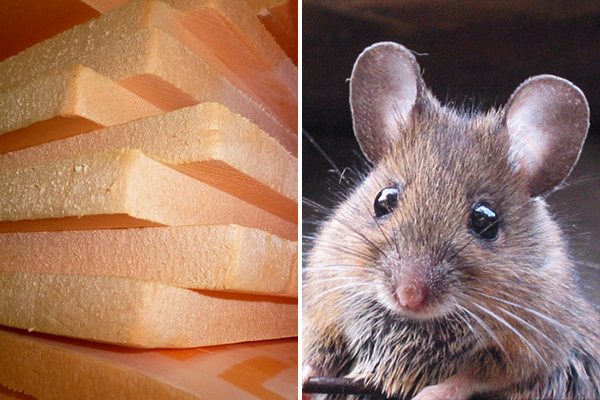
Eating or gnawing?
Mice eat, like all other creatures, organic foods. And most modern insulation materials are made from non-organic materials. Therefore, the taste of small inhabitants is not very to their liking. But they can start in many heaters. Like all of us, rodents also need a roof over their heads and they really want this roof to be comfortable. The insulation material chosen by the owner is almost the best that can be found in nature. So our first conclusion: rodents do not eat insulation, mice gnaw on foam plastic (and similar materials) and live in it. But, not in all.
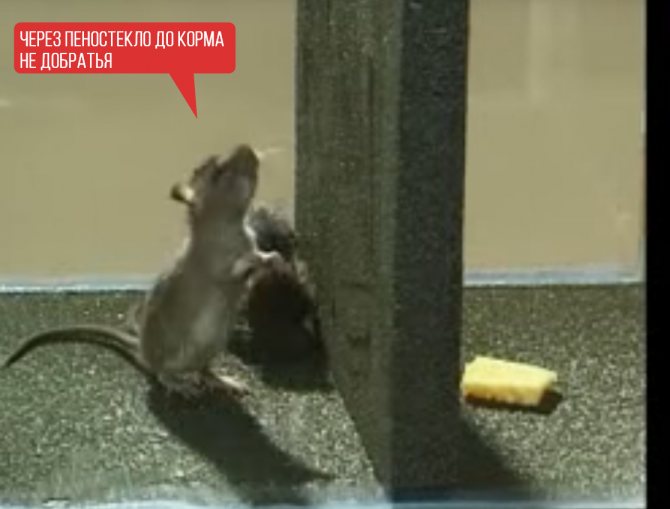

What is Penoplex
Penoplex is a lightweight material and has good sound insulation
Penoplex is a high-tech material made by extrusion. During the high-temperature operation, under strong pressure, the granular polystyrene is foamed and then extruded into even smooth slabs.
The catalyst for this operation is carbon dioxide with freon, after which the volatile substances evaporate, and a finely porous cellular material is formed with cells isolated from each other and filled with air. The result is a product that is cheap, durable and reliable.
The range of application of this heat insulator is very wide: insulation of loggias with penoplex, facades, floors. Penoplex is also used for laying under the bed of railways and airfield landing sites (you can read detailed information about what Penoplex is used for here).


With a housewarming or where we will live
Although we found out that overweight do not eat insulation, they live in some of them. Below in the table is a list of "favorites".
| Material | Features of the |
| Styrofoam | Even mice gnaw on styrofoam. Its relatively soft structure allows them to easily create a nest for themselves in a warm place. Moreover, in the case of a soft material, the thickness of even 200 mm does not become a big obstacle. In fact, rodents do not even need to gnaw on styrofoam, often only paws are enough. |
| Extruded polystyrene foam | Here you will have to try, although with due effort, extruded, that is, compacted foam will also not resist. Do mice eat Penoplex? No, but they also gnaw. Especially suitable for them is expanded polystyrene of large thickness - 150 mm and above, although initially everything gnaws. |
| foamed polyethylene (PPE) | Usually, thin insulation is gnawed with the goal not to live, but to pass "obliquely" to the goal, which lies further and is felt by rodents. |
| Polyurethane foam (PPU) | With this insulation, the situation is twofold. Well, firstly, with a strong desire, especially the rats will get to anything and through anything. Mice, of course, are weaker, but still, and their abilities are often enough.PPU is divided into closed-cell and open-cell. So, the first, by default, is not touched by rodents. 99% of the time. There are known situations in which rats gnawed 25-30 cm of high-quality polyurethane foam, but this is rather an exception. This situation arises with the instinct of self-preservation of the animal, when, for example, a rat got into isolation during installation. But, under normal circumstances, with a good PPU, this does not happen. He fell into the group of "edible" only because of the various species, which are subject to the attention of four-legged |
| Mineral (stone or basalt) wool, glass wool | Contrary to the statements of manufacturers, rodents also live in the minwat. Even more: it is in this insulation that they start up most often. Vata most of all reminds them of natural conditions. Therefore, despite all the enormous advantages of mineral wool, there is one more thing - protection from rodents cannot be added. |
Characteristics of brands
Penoplex types are represented by several brands; they include a set of characteristics inherent in the construction site where it will be applied. Then you can get the most out of the material on a case-by-case basis.
It is classified according to the characteristics of size and density:
- density, available parameters - 31-45 kg / m3;
- slab length -120 cm;
- thickness ranges from 5 mm to 3 cm;
- the width of the slab is usually 60 cm.
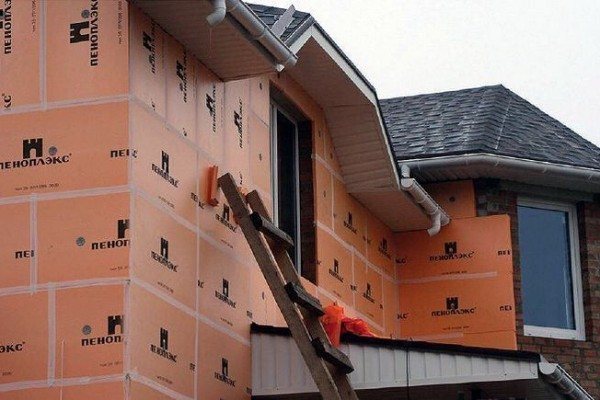

The insulation is thicker, it is preferable to lay it in at least 2 layers, in a checkerboard pattern, then the strength and uniformity of the coating will be higher
Testimonials
Last fall (2015) I insulated the utility room with 50 mm foam. In winter everything was fine. With the onset of spring, mice came and chewed on the wall (styrofoam). To be honest, by themselves they do not particularly bother me, but it is necessary to keep warm in winter. The insulation needs to be changed, tell me, please, what materials do the rodents not touch?
Valentine
I left a roll of insulation in the back room for the winter. After the season I noticed a nest, I think it was a weasel that hibernated in a roll. I don't know about mice, but for rats! even Soviet glass wool is not a problem to build burrows for yourself. It is necessary to lay the poison. I cover it from above so that the birds do not touch the grains. If there is a need, I can add more in winter.
Egor
Fact is fact, and you can't argue with that. It is clear that measures must be taken not yet at the construction stage. Attention to the question: which ones?
Some useful facts
In fact, representatives of the order of mice do not eat insulating building materials at all, since they are inedible. The goal of these small animals is to create a cozy nest for offspring, and they achieve it in an accessible way - they gnaw holes. To better convey the essence of the problem, we bring to your attention a number of facts obtained as a result of many years of practical observations:
- The invasion of rodents begins annually with the onset of cold weather. It is more convenient for a field mouse to get into a human dwelling, where there is heat and food, than to dig a hole in the ground.
- It doesn't matter what technology a private house was built with and what building materials were used in the construction. There are always several routes used by pests to get inside.
- Mice are able to climb vertical walls. So they get to the roof and settle on the ceiling, where the maximum amount of heat accumulates.
- Rats are very rare guests in residential buildings. They prefer grocery stores, granaries and other similar facilities. If they appeared in the house, it means that you have placed the pigsty and the shed with feed too close, where these dangerous rodents came from.
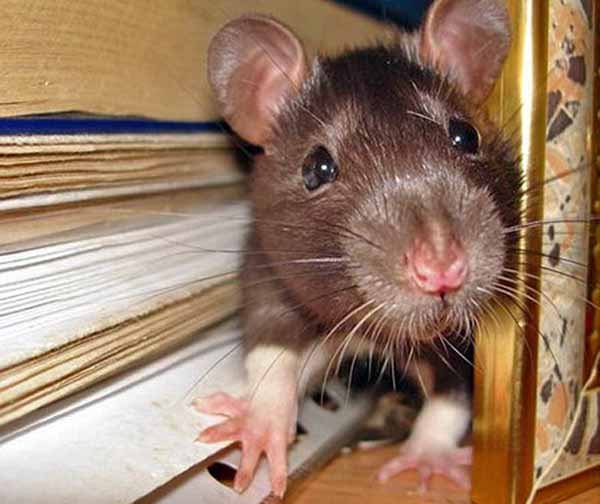

Reference. It is believed that rats are much smarter than mice and therefore more difficult to breed. But if you meet all the requirements for the placement of buildings on the site, then most likely you will never encounter rats. True, compliance with the norms must also be required from neighbors who can put a barn right next to your house.
How to protect the insulation?
Basically, there are two ways to protect thermal insulation from pests:
- Mechanical;
- Chemical.
Moreover, it should be noted right away that the first method is as reliable as a tank. The second is rather a temporary measure in case of storing unused material, although it is also used in finished structures.
Styrofoam and mice. If you build a concrete structure around a heat insulator, for example, foam plastic, that will protect it, no pests will most likely try to gnaw through it. For example, such types of finishes as "Bark beetle" mice and rats do not gnaw very often.
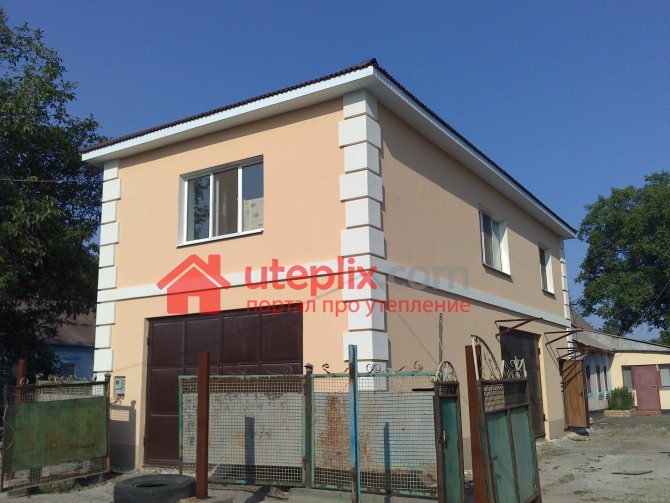

Rodents are becoming a big problem for owners of frame houses. The frame essentially consists of insulation, and it can be protected with a reinforced mesh with a very fine cross-section.
Chemical activity
Its low chemical activity should be especially noted. This is another positive side of the material, since it does not lend itself to the influence of many compounds:
- alcohol-based paints;
- different types of acids;
- salt solutions;
- chlorine;
- various oils and paraffins;
- cement mortars.
But there are also such substances, although there are few of them, that have the ability, when interacting with penoplex, to make it change shape and even dissolve.
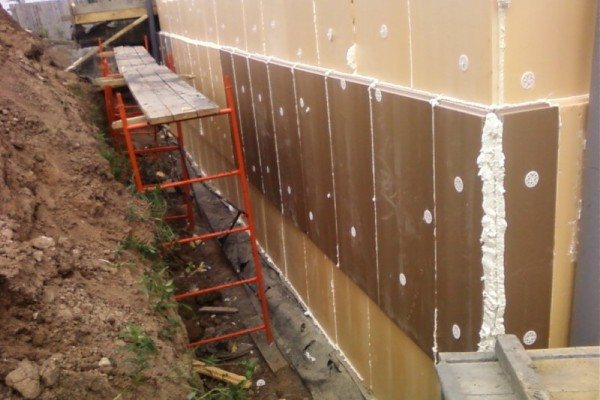

When insulating the glue for work, it is important to choose the one indicated in the instructions
It is important: when choosing a solvent for painting, you should carefully study the instructions in order to avoid deformation and shrinkage of the material.
If they already live, how to get rid of?
In this case, you should not hope that the rodents will leave by themselves. You need to get rid of rodents in two stages. First of all, you need to eliminate the source of their appearance. Perhaps it is a trash can, because of which mice can live near the house or uncovered edible supplies in the house. In general, everything that pests can drink.


When the source is eliminated:
- Disassemble the insulating cake;
- Remove damaged parts;
- Restore the insulation layer;
- Take care of protection for the future.
Although, it is clear that there can be no miraculous solution to the problem. Therefore, many decide, either at the stage of replacement or construction, to choose one of the options that are not interesting to pests.
Penoplex Foundation
This class is used mainly for insulation of the foundation with foam.
The strength of such slabs solves the problems associated with building the base of the house and basement as a waterproofing protection that can reduce the load of groundwater. The presence of a fire retardant in this type of insulation is not provided.


Penoplex provides durable thermal insulation of the foundation
Quality insulation and rodents. Which do not gnaw
The forks of insulation materials listed below, for one reason or another, are not interesting to rodents:
- Linen fiber mats;
- Foam glass;
- Vermiculite;
- Expanded clay;
- Perlite;
- Ecowool;
- Foam concrete,
- Aerated concrete.
Concrete-based materials benefit from strength.
Ecowool mice. Ecowool contains orthoboric acid, which is added to the composition so that organic material does not rot. It is she who protects the material from pests.
Material properties
Penoplex is laid on a concrete screed after waterproofing with polyethylene or roofing material
The technical characteristics of the penoplex make it attractive for use in the construction of low-rise structures and private and industrial construction:
- the most important thing is a low thermal conductivity index, its indicator of 0.03 W * m * 0C can compete with any insulation and will remain the winner;
- increased resistance to transpiration (penetration) of moisture - only 2 cm of foam in terms of vapor permeability correspond to roofing material;
- due to extrusion, the mass is homogeneous, therefore, evenly distributed cells significantly increase its strength. Even at very high loads, its parameters are almost unchanged;
- high moisture resistance - the liquid is absorbed only in the places of the cuts, where the integrity of the cells is broken;
- Penoplex is not subject to rotting and decomposition, mold does not develop in it, which indicates the high biostability of this material.
Temperature conditions that allow penoplex to operate range from -50 to +75 degrees Celsius, but for each type of penoplex, the temperature limits are indicated in the instructions.
You need to know: in order for the sizes of the foam plates to remain unchanged, the temperature indicated in the product passport should be observed. With excessive heating, its characteristics can change.
Penoplex Roofing
The article is popular in our market, its old brand is 35. The plates can withstand a load of 35kg / m3. They insulate facades, walls, roof structures, floors, communications, and even use it in industrial construction. Such a roof will serve for a long time, suitable even for flat options where you can break a flower garden.
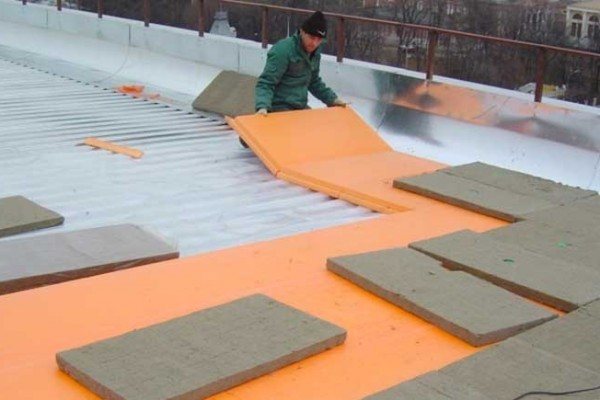

The process of roof insulation with penoplex
Penoplex45
This type is widely used not only in private construction, it is in demand for the construction of roads, runways at airfields, since its density is the highest - 45 kg / m3. Such plates reliably protect them from frost and thawing, as a result, the surface remains smooth and less damaged. When constructing loaded types of roofs, playgrounds and even parking lots are arranged on them.
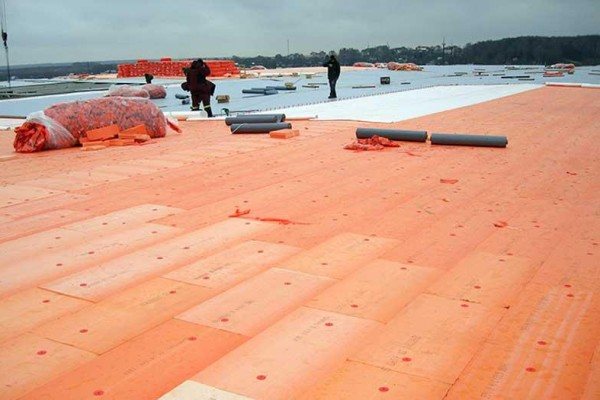

Note: in order to purchase a product worthy and necessary for the intended purposes, it is imperative to check all the documents and make sure that the technical characteristics of the penoplex correspond to the proposed material.
Penoplex Wall
Fire retardants are present in its composition, which means that its resistance to combustion is increased. They are used in the installation of vertical structures, insulation of facades, external and internal walls, it is also allowed to insulate the facade of the house with penoplex of this class.
But inside, insulation occurs only when it is impossible to do it from the outside for some reason. This type is especially good when plastering walls.
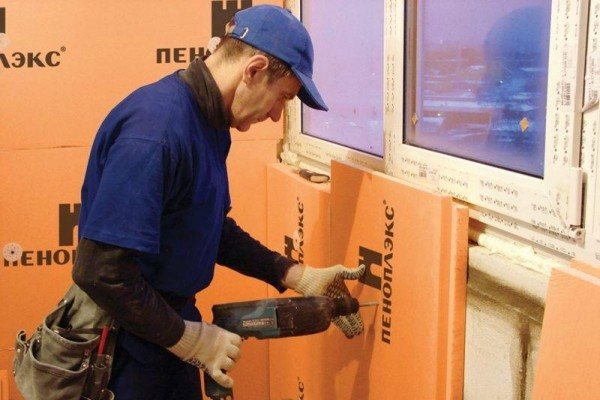

For indoor work, use the thinnest plates, the heat level will increase, and it will be much easier to work.
For indoor work, the thinnest plates should be used, the heat level will increase, and it will be much easier to work.
We advise you to read the article on the technology of wall insulation with penoplex. And in this article you can find out about the types of glue for penoplex.
Why is cleanliness important?
In most cases, the reason for the attack of mice on a human dwelling is the same - this is the lack of ideal cleanliness in the house and in the house area. The appearance of small rodents is always logical if the site is littered with garbage, there is food waste in direct accessibility, and total disorder reigns in the house. Mice are almost omnivorous and will feel comfortable eating waste and food supplies. They will switch to polystyrene, most likely, if they understand that cozy warm nests can be made in it, or if this material prevents them from getting food and water.
As you can see, it is very important to maintain cleanliness on the garden plot and in the house itself. It is not for nothing that people say that a clean owner does not have mice. There is a deal of truth in it. Immediately remove leftover food in an inaccessible place, carefully remove the table from crumbs and pieces of food. Take care to completely block the path for the mice to reach the croup storage sites. The trash bin should be equipped with a lid that fits snugly against the bin, and the container itself should be cleaned of debris every day.
At the same time, many people forget about the attic space, because it is there that we often put unnecessary things, we carry trash there, which is a pity to throw away. In the attic, herbs are often laid out for drying, and any food products are stored. Remember that the attic is not designed for this kind of storage. It should be empty and clean.If you carefully maintain order, even if mice do appear, it will be easy to deal with them with the help of a mousetrap, since their number will most likely be small.
If you notice a rodent for the first time in a house where there were no mice before, you need to take adequate measures as soon as possible. Mice, as a rule, do not walk alone, but move in groups, so it is likely that if you saw one mouse, then there are several more individuals in the house. And they can breed very quickly in favorable conditions, and then it will be very difficult to get rid of the pests, and then fight the damage caused.
Another unpleasant moment - mice like to make warehouses of provisions in their nests. All of them cannot eat, so some of the food will rot and give off an unpleasant odor. In addition, corpses of dead individuals may be in the passages. This can make it unbearable to be in your own home and necessitate a complete replacement of the insulation layer.
conclusions
So, at the beginning of the article, we had three tasks: to find out what can be used to insulate a house so that mice and other rodents cannot get into the insulation, how to process the material so that it is not of interest to them, and how to remove pests if they are already visiting. We noted that:
- Mineral wool and foam are attacked;
- Around the insulated area, you need to arrange a fencing structure - for example, the foam can be plastered without leaving even a small gap;
- Material treated with insecticidal agents or orthoboric acid repels pests;
Whatever the material has been processed, mice will not appear in the insulation for sure, only if it is covered with a protective layer. Protected in this way, the material will properly serve its purpose.
I wish you good construction and only invited guests to the house!
Penoplex Comfort
Known under the brand name 31C, the options for its use are wide: they are thermally insulated from the basement to the walls, and also produce insulation of the ceiling.
Due to its high moisture resistance and versatility, Comfort Penoplex is also suitable for basements, as well as floor insulation in a bath with Penoplex will be the best solution. It can be called a universal insulation.
The density parameters of the slabs are from 25 kg / m3 and above, the highest values are 32 kg / m3. This variety is in demand in the middle lane and in the north of Russia, it is successfully used in the basement insulation.


Thermal insulation of the basement of the house with penoplex
Installation of a rodent net
The mesh should cover the protruding bottom of the foam. If the foam comes out of the ground, the mesh should cover the above ground 40 cm above ground level and at least 30 cm below ground level on the outside of the insulation. It is possible to perform the protection correctly only when installing the insulation system, or in the case of repairing the entire lower layer of the plates.
← Previous Story
Next article →

